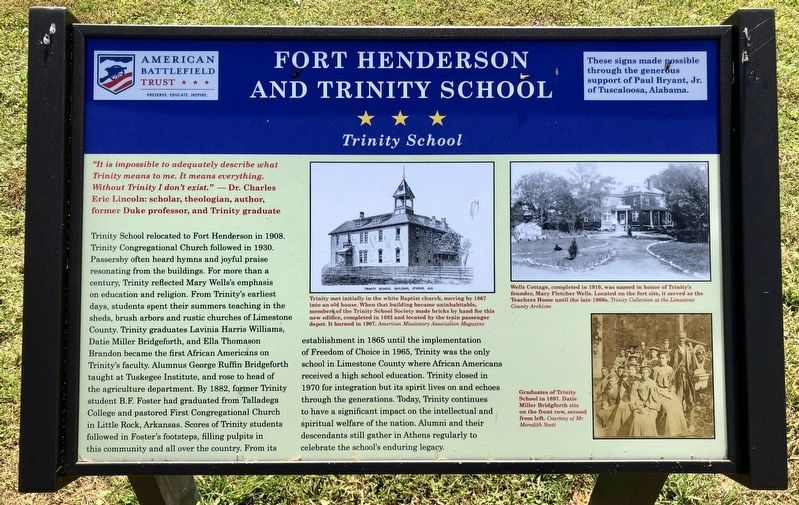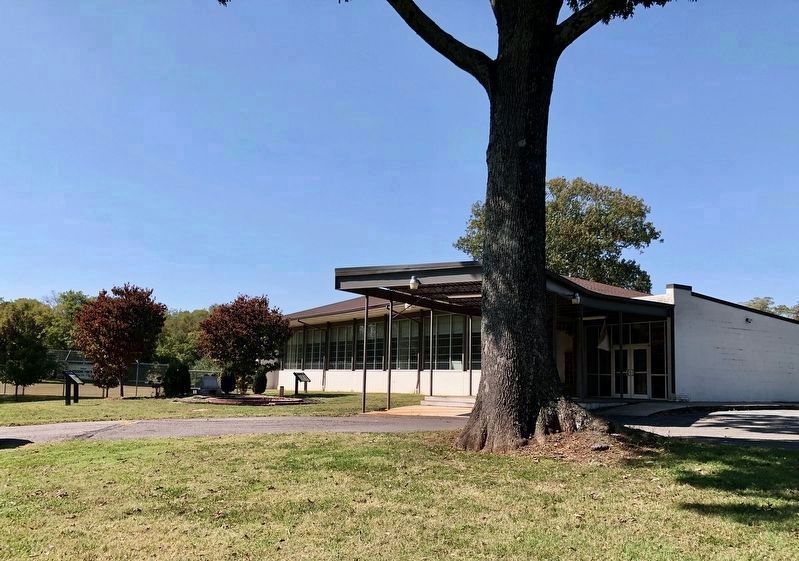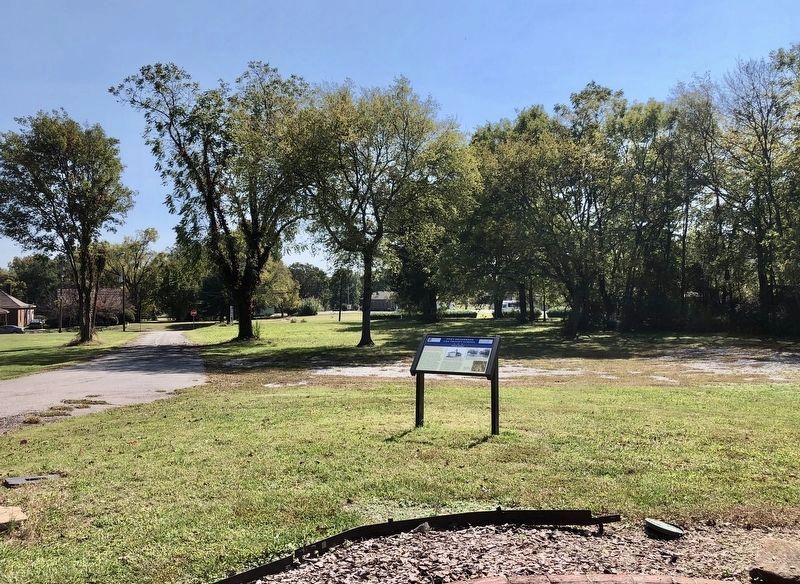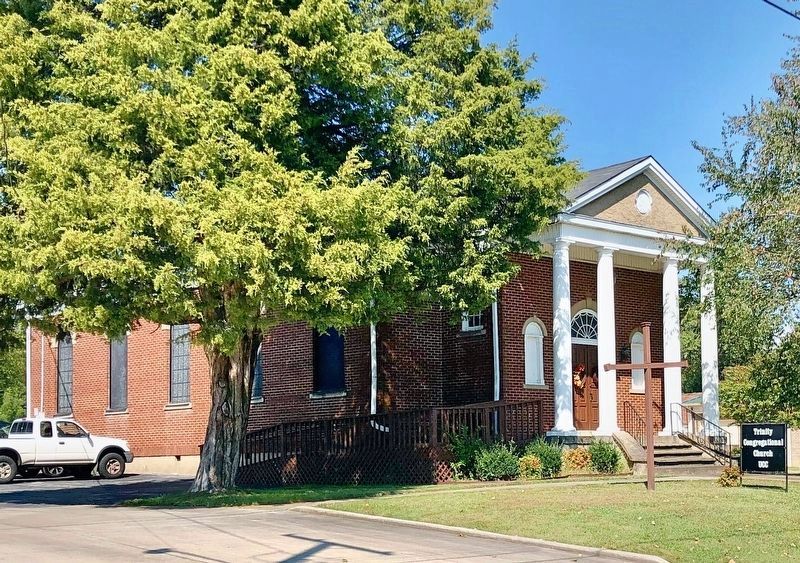Trinity School
Fort Henderson and Trinity School
Trinity School relocated to Fort Henderson in 1908. Trinity Congregational Church followed in 1930. Passersby often heard hymns and joyful praise resonating from the buildings. For more than a century, Trinity reflected Mary Wells's emphasis on education and religion. From Trinity's earliest days, students spent their summers teaching in the sheds, brush arbors and rustic churches of Limestone County. Trinity graduates Lavinia Harris Williams, Datie Miller Bridgeforth, and Ella Thomason Brandon became the first African Americans on Trinity's faculty. Alumnus George Ruffin: Bridgeforth taught at Tuskegee Institute, and rose to head of the agriculture department. By 1882, former Trinity student B.F. Foster had graduated from Talladega College and pastored First Congregational Church in Little Rock, Arkansas. Scores of Trinity students followed in Foster's footsteps, filling pulpits in this community and all over the country. From its establishment in 1865 until the implementation of Freedom of Choice in 1965, Trinity was the only school in Limestone County where African Americans received
a high school education. Trinity closed in 1970 for integration but its spirit lives on and echoes through the generations. Today, Trinity continues to have a significant impact on the intellectual and spiritual welfare of the nation. Alumni and their descendants still gather in Athens regularly to celebrate the school's enduring legacy.
[Photo captions:]
Middle: Trinity met initially in the white Baptist church, moving by 1867
into an old house. When that building became uninhabitable,
members of the Trinity School Society made bricks by hand for this
new edifice, completed in 1882 and located by the train passenger
depot. It burned in 1907. American Missionary Association Magazine
Top right: Wells Cottage, completed in 1910, was named in honor of Trinity's founder, Mary Fletcher Wells. Located on the fort site, it served as the Teachers Home until the late 1960s. Trinity Collection at the Limestone County Archives
Bottom right: Graduates of Trinity School in 1897. Datie Miller Bridgforth sits on the front row, second from left. Courtesy of Mr. Meredith Scott
Erected 2020 by American Battlefield Trust & Paul Bryant Jr.
Topics. This historical marker is listed in these topic lists: African Americans • Churches & Religion • Education. A significant historical year for this entry is 1908.
Location.
Other nearby markers. At least 8 other markers are within walking distance of this marker. Reconstruction (a few steps from this marker); Coleman Hill (within shouting distance of this marker); Prisoners of War (within shouting distance of this marker); The United State Colored Troops (within shouting distance of this marker); The Battles of Fort Henderson and Sulphur Creek Trestle (within shouting distance of this marker); Fort Henderson / Trinity School - 1865-1970 (about 300 feet away, measured in a direct line); Coleman Family (approx. 0.3 miles away); Governor George S. Houston Home (approx. half a mile away). Touch for a list and map of all markers in Athens.
Also see . . .
1. Athens' Trinity Congregational Church at 142nd anniversary in 2013. (Submitted on October 18, 2020, by Mark Hilton of Montgomery, Alabama.)
2. From USCT Fort to African American School in Athens, Alabama. (Submitted on October 18, 2020, by Mark Hilton of Montgomery, Alabama.)
Credits. This page was last revised on October 25, 2020. It was originally submitted on October 18, 2020, by Mark Hilton of Montgomery, Alabama. This page has been viewed 483 times since then and 60 times this year. Photos: 1, 2, 3, 4. submitted on October 18, 2020, by Mark Hilton of Montgomery, Alabama.



